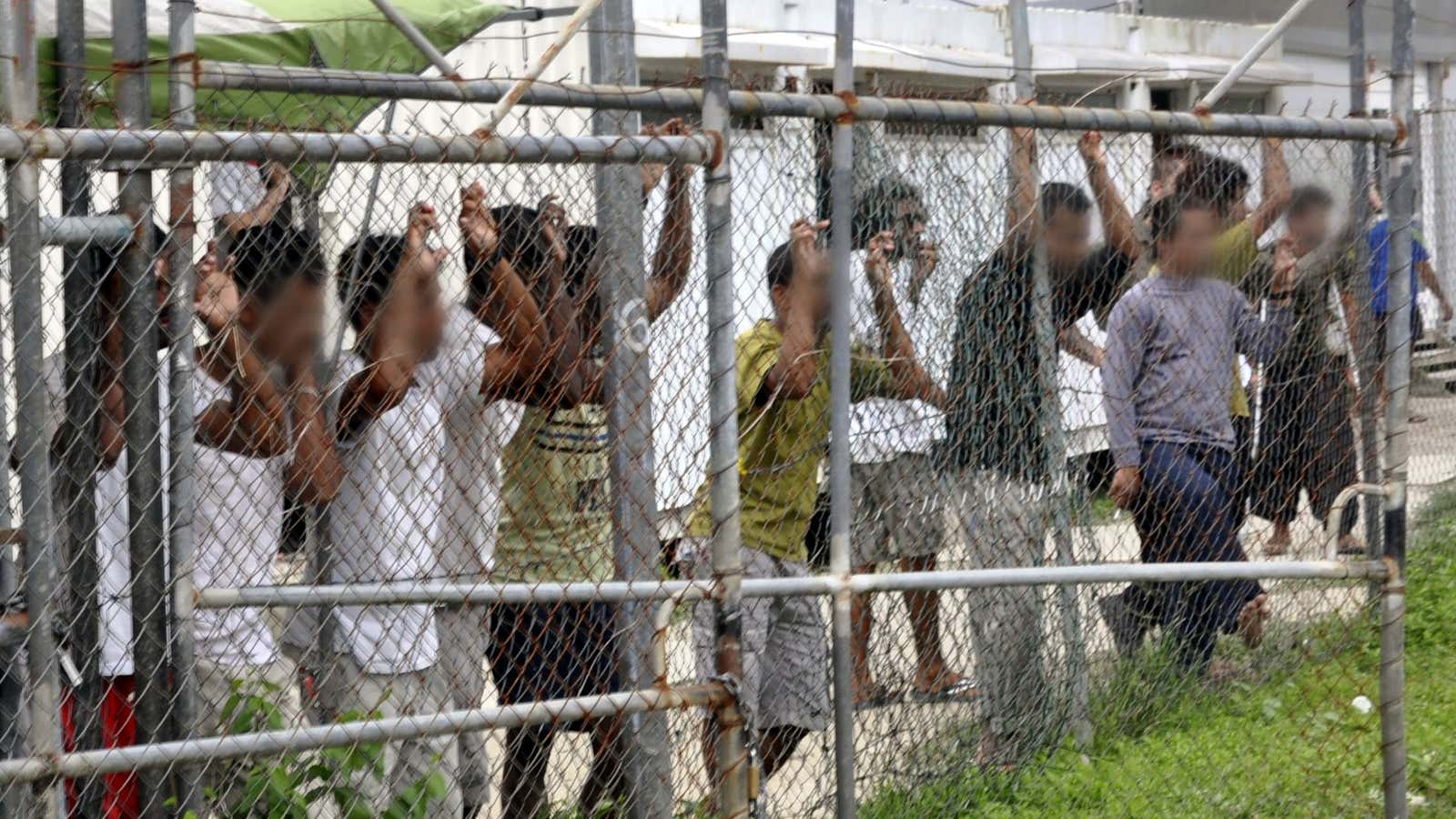In his Jan. 27 executive order halting all intake of refugees for 120 days, and indefinitely in the case of Syrian refugees, US president Donald Trump carved out an exception for those determined to be accessing the country under “a preexisting international agreement.”
The line seems to refer to one specific agreement: the one to resettle the refugees currently held in Australia’s offshore detention camps in the Pacific, on the island country of Nauru, in Micronesia, and Manus Island, in Papua New Guinea. The agreement was struck by former US secretary of state John Kerry in November, and according to a Jan. 30 statement by Australian prime minister Malcolm Turnbull, Trump had pledged to honor the arrangement.
But it sounds like the US president, who reportedly had a very tense phone call with Turnbull, is ready to revisit the whole idea.
Trump’s characterization of the arrangement was misguided in multiple ways.
1. They are not immigrants
The people detained on the islands aren’t immigrants; they are refugees, with legitimate reasons to apply for asylum.
They are of various origins, having fled war or persecution from places including Syria, Iran, Sudan, Somalia, and have traveled across the world, trying to find a safe haven in Australia, where some have family members to join. However, Australia has an extremely strict policy when it comes to admitting refugees arriving to the island nation via sea: Not only does it forbid their relocation in Australia, but permanently bans them from entering the country, sending them instead to offshore detention camps.
Over the past three and a half years, about 2,500 people (including minors) have been sent to the two detention centers on Nauru and Manus Island. The levels of abuse and desperation on the islands are shockingly high; many of the refugees suffer from serious mental illnesses and have made suicide attempts.
2. They are not thousands
Kerry didn’t promise to resettle “thousands” of the refugees. What he agreed to is a one-time deal to resettle 1,250 refugees, through the support of the United Nations High Commission for Refugees (UNHCR). There was no specific timeline attached to the resettlement, and though US officials have visited the camps to interview potential candidates, there’s no clarity as to when these people would be able to leave the detention centers—that was even before Trump was going to study the agreement.
3. They are not illegal
As the Associated Press Stylebook notes, it’s poor form to call people “illegal” to mean that they are undocumented, or not allowed to live in a certain country. But beyond semantics, the issue here is that it’s Australia, not the refugees, that fits the description of illegal. As a signatory of the 1951 UN refugee convention, Australia agreed to accept asylum seekers reaching the country—regardless of their medium of choice. Further, any host country is legally bound to treat refugees fairly, and to not detain them without a specific reason (for instance, in offshore camps).
4. This was not a deal—not in the Trump sense of the word
In the business world, a deal is something you enter into when there is a benefit to doing so, and Trump himself has many strategies for doing this on the most favorable terms possible. The US wasn’t negotiating the refugee resettlement the way a self-interested business would. It was doing so to address a pressing humanitarian need; there wasn’t much to ask for Australia, or the refugees, for in return, although Australia did agree to help the US with the relocation of some Central American refugees held in Costa Rica. So perhaps Trump is right when he says that the refugee resettlement arrangement with Australia is a bad deal for the US, but that’s because the US wasn’t looking for a “deal” to begin with.
It is unclear what will happen to the refugees now that Trump has promised to further scrutinize the arrangement. One possibility is that the US will stop them from entering the country, either for failing to pass the coming US standards for ”extreme vetting” or merely based on their nations of origin, and they will continue to live on the islands in limbo.
Given that Australia isn’t willing to take responsibility for them, it’s hard to imagine the Turnbull government would put any actual pressure on the US to adhere to the previously negotiated arrangement. It’s equally difficult to imagine Trump pressuring Australia to take up its legal obligation to offer asylum.
